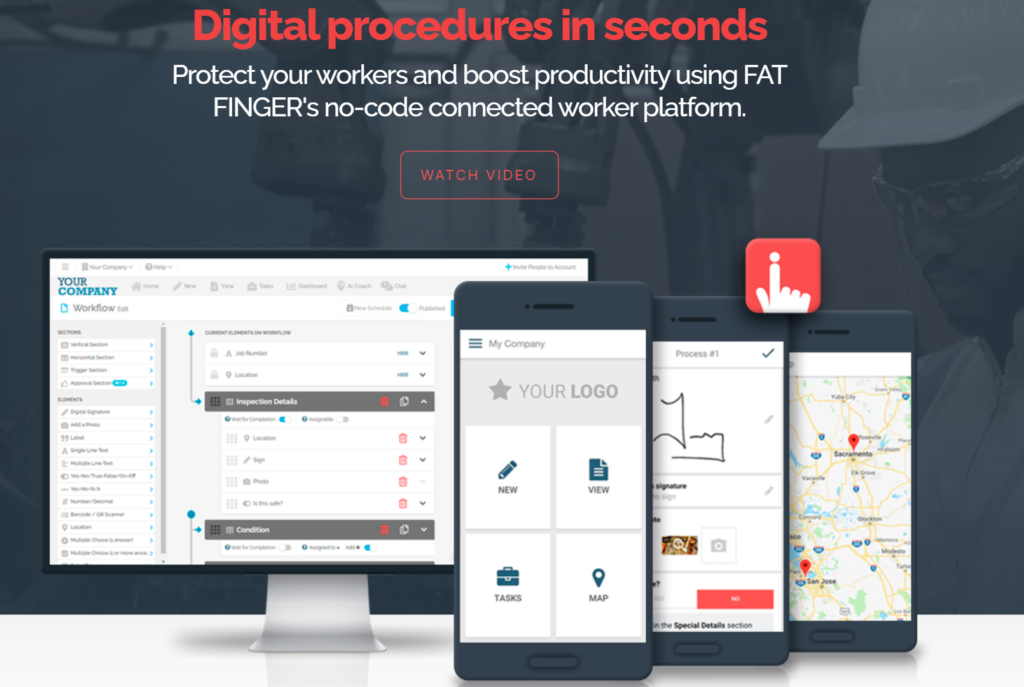Changeover in production lines is a critical process that can significantly impact the efficiency and productivity of manufacturing operations. With the right tools and strategies, such as FAT FINGER, a digital workflow procedure builder, you can streamline this process and ensure your front-line teams do their work correctly every time.
FAT FINGER empowers teams with features like Drag & Drop Workflow Builder, Mobile & Desktop Workflows, Dashboards, Integrations, Augmented Reality, Connect IoT Devices, and Artificial Intelligence Coaching.
In this article, we will delve into the Changeover Process and how FAT FINGER can facilitate seamless line changeovers.
What is Line Changeover?
Line changeover, also known as line clearance, is the process of verifying that all line changeover activities have been completed and that the line is ready to resume production. This process is crucial in manufacturing environments where shop floors are constantly changing due to the introduction of new products, discontinuation of old ones, and adjustments in production schedules. The benefits of line clearance include reduced downtime, improved line efficiency, and increased product quality.
Line Clearance Procedures with FAT FINGER

Production Managers who have used FAT FINGER have found it to be a game-changer for their production line clearance process. Here are the three steps involved during line clearance procedures:
- Clearing the line: This involves removing all products from the line and ensuring that no product remains in any of the line equipment. This step is essential to prevent cross-contamination of products.
- Cleaning the line: This involves sanitizing all surfaces that will come into contact with the product. It also involves removing all product build-up and debris from the line.
- Inspection: This is conducted to ensure that the line is clear and clean and that all equipment is in good working order. All moving parts should be lubricated, and all electrical connections should be secure. After inspection, the line is restarted, and production can resume.
By following these steps, manufacturers can prevent contamination and ensure quality products. With FAT FINGER, you can make your line changeover as smooth as possible.
The Importance of Digital Line Clearance Checklists
In modern manufacturing, line clearance is an essential part of quality control. By using a digital line clearance checklist, manufacturers can streamline the process and reduce the chances of human error. A CXV Global survey of 30 pharmaceutical professionals found that 100% of respondents had experienced a line clearance error in the past year, and 96% said their current line clearance process takes more than 60 minutes.
With FAT FINGER, all the necessary information is stored in one place, and anyone on the production line can quickly access it. Remarks, corrective actions, and photos collected during line clearance can be added to the workflow. Reports can be generated on-site and sent to relevant stakeholders via email, PDF, or web link. Tasks can be assigned and scheduled directly from the app, ensuring everyone is on the same page.
Conclusion
Line changeover is a critical process in manufacturing that requires careful management to avoid disruptions in production. With FAT FINGER, you can streamline this process, reduce the chances of human error, and ensure a smooth, efficient manufacturing process. So why wait? Get started today and ensure your front-line teams do their work correctly every time.
Sign up to create a line changeover workflow for free on FAT FINGER or schedule a demo to see how FAT FINGER can revolutionize your production line clearance process.
Ready to understand the changeover process in production lines better? Dive deep into the intricacies of optimizing your production line for maximum efficiency. Don’t wait, schedule a demo today and take the first step towards a more streamlined production process.


